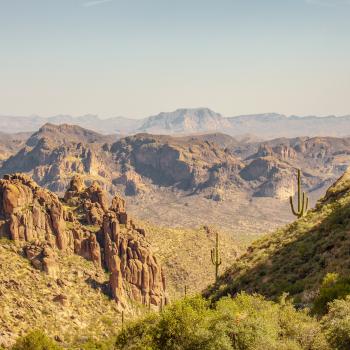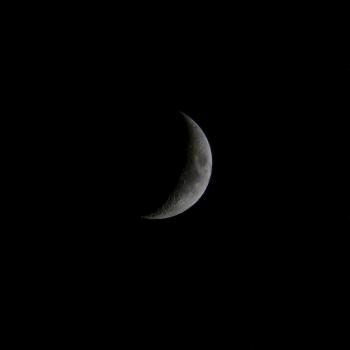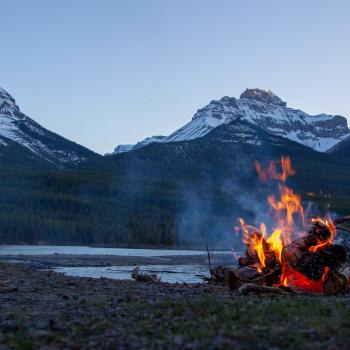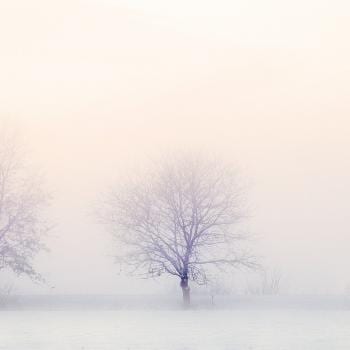I finished a myth the other day that I wasn’t quite sure I’d ever be able to get down on paper. I had all the important pieces, but I didn’t know what sort of atmosphere I wanted to build, how to string the pieces together, how to make the story make sense. That’s usually the biggest problem – figuring out how to turn a bunch of impressions, images, and ideas into coherent stories.
Writing the story down, and considering my process, reminded me that I wanted to write a post about how I ‘create’ these myths – basically, my ‘process’ and discernment.
When I originally began working with these gods and their spirits, I wrote down every vision, dream, and idea I had of them. I wrote thoroughly on my individual journeys. By the time I began interacting with the Four Gods, I’d already been journeying for a few years. (I feel it important to note that, for much of my life, there was no line between ‘guided meditation’ and an actual journey to the otherworld. Eventually, I moved away from guided meditations entirely and began exploring outside of myself rather than internally, drawing a firmer line between those two practices, and that, I believe, is what made me able to interact with the new gods.) I did not expect to write myths or stories about the gods for others.
I realized I would need to write myths for two reasons: one, the visions and experiences I had in trance or when trance-writing were not just about me (what a surprise) and two, mythic stories gave incredible insight into the behavior and reality of the gods. I could put out pages upon pages of information about the Four Gods, full of correspondences and epithets and what they had dominion over, but that was far less engaging and informative that a story.
I could tell people that, ‘the Dierne is really angsty sometimes,’ or I could show him being angsty. I could tell people about the relationships the gods had with each other, or I could show them those relationships, as well as the nuances that are much harder to get down in informative posts. And, in showing, I opened up wider interpretations of what the stories could mean – both to humans and the gods.
(So, hopefully, that answers any questions as to why I share the myths rather than let people ‘find them on their own’.)
The ‘seed’ of a myth comes from a few places:
- Journeying through trance to the otherworld and conversing with spirits directly to learn stories
- Interacting with a specific spirit in the otherworld and in the physical world, through omens, divination, and spirit activity
- Dreams
- Recurring signs and symbols and divination
I am not going to go deeply into my journeying methods in this post. Basically, I journey to the otherworld in dreams, trance, and through writing. I differentiate between internal journeys (exploring my self and my internal landscape) and external journeys (exploring the world of Faery).
Once I have the seed of a myth, I start putting the story down on paper. In dreams, I’ll usually be given a name or an idea and spin a story around that. For example, I’m working on a story about a spirit in the Otherfaith called Desiree, and her name and presence came in a dream. During divination, I will reach out to my gods, and if certain cards or symbols continue to show up I take that as a sign that there is a story there – as was the case with the Clarene and her association with lions, which was revealed to me through divination. Other times, a spirit will approach me in journeys and request that I write about them. Usually, in that case, the spirit will accompany me during daily life for a few days or weeks until their story is complete.
Sometimes, once I’ve written up a story and gotten it ready to share, a spirit or god will change their mind and ask me not to share the myth. I may be in the middle of writing a story and find that all the important pieces have vanished from under me, and no matter how hard I try I can’t piece the story together. In both cases, I usually put the story away for a few weeks or months before returning to it. If I am unable to continue the story where it puttered out, or I continue to receive ‘negative’ signs (in divination, omens in daily life, and general ‘no’ feelings), I let the story go.
For many of the spirits of the Otherfaith, one or two stories will suffice. I’ll be given an idea, theme, or have been told a story, and then write it down. I’ll add my own flourishes, of course, since the story has to come through me and is only ever as strong as the person writing it is. I will navigate my way, through my writing, to images that pester my mind – in the case of the story about Corliss, I was constantly bombarded by dreams of islands, visions of a woman lying in the sea, and Rapunzel imagery that I would later come to associate with Corliss – at which point the imagery and visions will abate. I may receive an epithet from the spirits that I then have to explain through a myth.
There is also the much larger mythic story of the Otherfaith, that informs our ethics and our entire religion. This revolves around the Four Gods specifically and deals with how and why the Westernlands – our sacred otherworld – came into being, how each of the gods gained their domains and powers, and why the gods are as they are today. Of course, there isn’t one ‘correct’ or ‘right’ mythic story. The nature of the otherworld and its relation to our world makes everything wonky and twisted, and in the Otherfaith we hold that many different myths can all be true.
So I never go into writing these stories with the idea of ‘getting it just right’. What I attempt to do with the myths is demonstrate how the spirits behave, what we can expect when interacting with them, and who the spirits and gods are. The stories aren’t frozen in time once I’ve written them down. The Westernlands keep moving, as does our world, and the spirits keep changing and living.
What I do focus on, when writing, is trying to make an engaging story that is true to how I’ve experienced the spirits. Stories true to the lessons they’ve taught me. I also focus on making stories coherent, which means at time I have to leave out, change, or rearrange parts of the story in order for it to make sense. I’ve written about getting details wrong before, and it’s something I always watch out for. There is a line between different yet true myths and getting a story flat out wrong, which I’ve noticed occurs most often when I rush to try to write a story without having all the pieces.
Most often, when I begin writing a myth based on a dream or image or idea, the words just flow. I let what happens in the story happen, and only after I’ve finished will I go back and review the story and make sure it is correctly structured and not too messy.
Basically – I get pestered by an idea and write out a story based on that idea. (Except sometimes that idea is an actual spirit pestering me, or an almost complete story.)
Once I’ve gotten a myth out, I love feedback on it – both in a ‘is this well-structured’ and in a religious sense. (I’ve been trying to encourage devotees of the Otherfaith to contemplate on the myths and talk about their interpretation of what the myths mean.) I also reflect on the meaning of the myths, what I can discern from them, how they shape my perception of the world, how they influence the Other People and their interaction within and without their religion, etc. While I do hope to write pieces that stand on their own as strong writing, they are religious texts, and so I always contemplate them after I’ve published them. (I have quite a few essays and posts-to-be interpreting various myths.)
For me, the myths are most helpful because they show other people why we revere certain spirits and why we give certain epithets to the gods. Rather than accepting that we call the Dierne the ‘one who fell’ just because that’s what we call him, we have a myth explaining how he actually fell to earth. We have myths were the Clarene heals humans and ones where she harms them, and each reflect a part of her that is real and true.
Hopefully that explains a bit about my method. I do plan to explain more about how I journey, but that post will be far into the future.












